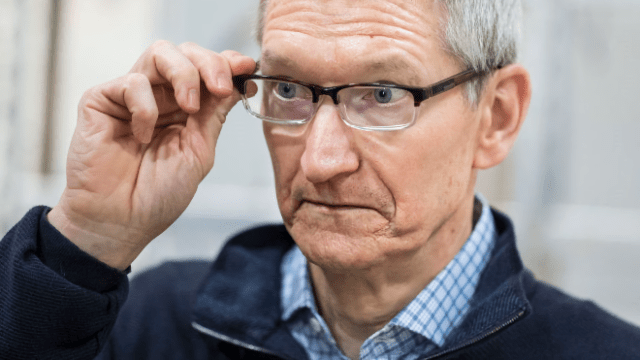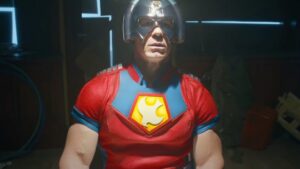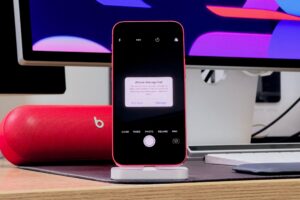How an indecisive Tim Cook blew $1 billion a year on a vehicle Apple never built

For the last decade, many Apple employees working on the company’s secretive “Project Titan” electric vehicle project called it “The Titanic Disaster.” (We’d have gone with “Project Titanic.”) Amidst the layoffs, constant staffing and goal changes, and a general stench of failure permeating the effort, they knew the project was doomed to fail, The New York Times reported late last month. Now, Bloomberg Businessweek offers a behind-the-scenes look at how, for a decade or so, an indecisive Tim Cook blew $1 billion per year into a vehicle Apple never built.
Mark Gurman and Drake Bennett for Bloomberg Businessweek:
On Feb. 27, Apple told staff it was giving up on developing a car. That decision, while abrupt, was not a surprise. Over the past decade, the company toiled away on at least five different major designs, drove prototype self-driving systems for more than a million miles, hired engineers and designers only to lay them off, and weighed partnerships or acquisitions with Tesla, Mercedes-Benz, BMW, Volkswagen and McLaren Automotive, among others. The car program cost, on average, roughly $1 billion annually (or nearly a fifth of Apple’s research and development budget a decade ago), with outside teams for chips, camera sensors, cloud services and software adding hundreds of millions of dollars more to the yearly spend.
But Apple never got close to realizing its original vision, or any of its subsequent ones. It didn’t get as far as testing a full-scale prototype on public roads. That it didn’t is partly thanks to the enormous technical difficulty of its self-driving goals, as well as the punishing economics of the automaking business. The project was also a failure, at the highest levels of the company, to settle on one thing and do it.
According to a longtime Apple executive who worked on the car, it was widely seen within the company as an ill-conceived product that needed to be put out of its misery. “The big arc was poor leadership that let the program linger, while everyone else in Apple was cringing,” they say. Asked what went wrong with the effort, a senior manager involved in the vehicle’s interior design replied: “What went right?”
[B]efore sketching out its own designs, Apple considered acquiring Tesla. At that point the electric-car maker’s success was far from assured, and its value was less than $30 billion, or a 20th of what it is today. Adrian Perica, Apple’s head of corporate development, held a series of meetings with Elon Musk. But Cook, who’d succeeded Jobs three years earlier, shut the deal down while negotiations were still at an early stage…
For [Doug] Field, [Bob] Mansfield and others on the team, Cook’s indecision was frustrating. “If Bob or Doug ever had a reasonable set of objectives, they could have shipped a car,” says someone who was deeply involved in the project. “They’d ask to take the next step, and Tim would frequently say, ‘Get me more data, and let me think about it.’”
MacDailyNews Take: There’s tons more in the full article here.
Unfocused dysfunctional hubris is exactly what competent leadership avoids. – MacDailyNews, February 29, 2024
Again, the writing has been on the wall for electric vehicles for some time now. Even Tim Cook’s Apple can now finally read it.
What we have here is a company that was once led by a visionary who set the agenda for entire industries, now led by a reactive caretaker who heard somewhere that VR headsets and electric cars were the next big things (probably read it in Wired), so that’s what he had Apple do, while completely missing artificial intelligence, especially generative AI, and now is scrambling to catch up to something Steve Jobs would have focused on long before anyone ever even heard of OpenAI.
Steve Jobs bought Siri in April 2010. Steve Jobs would never have ignored Siri, basically let it rot, for well over a decade and counting. Steve Jobs would have made Siri the first conversational generative AI assistant years before anyone else. And the company would today be worth at least a trillion dollars more than it is currently. (Yes, we’re lowballing that estimate.)
Tim’s not a product person, per se. – Steve Jobs
See also:
• Apple said to be spending ‘millions of dollars a day’ on generative AI to supercharge Siri – September 7, 2023
• Apple’s Siri turns ten, still acts like a two-year-old – October 4, 2021
• Former Apple employees reflect on Siri’s ‘squandered lead’ over Amazon Alexa and Google Assistant – March 14, 2018
Clearly, Apple is not as innovative as it was under Steve Jobs, but the company — thanks to Jobs’ work and Cook’s subsequent management of iterations of products and services conceived during Jobs’ tenure — now has more than enough money to make up for Cook’s lack of vision.
Until it gets another visionary leader (fingers crossed; Apple’s history has shown – cough, Sculley, Spindler, cough – that the next CEO could be far, far worse than the very competent caretaker Cook), Apple can afford to miss things like generative AI – which they clearly did – and then use its huge war chest to catch up – which they’re doing right now (fun times and 80-hour weeks inside Apple Park!) – and, hopefully, surpass rivals (or at least be as good). Apple will very likely unveil their catch-up work within months (this June at WWDC 2024) in iPhones (and iPads, Apple Watches, etc.) with built-in on-device generative AI and other new AI-driven features. – MacDailyNews, February 14, 2024
Please help support MacDailyNews. Click or tap here to support our independent tech blog. Thank you!
Support MacDailyNews at no extra cost to you by using this link to shop at Amazon.
The post How an indecisive Tim Cook blew $1 billion a year on a vehicle Apple never built appeared first on MacDailyNews.



